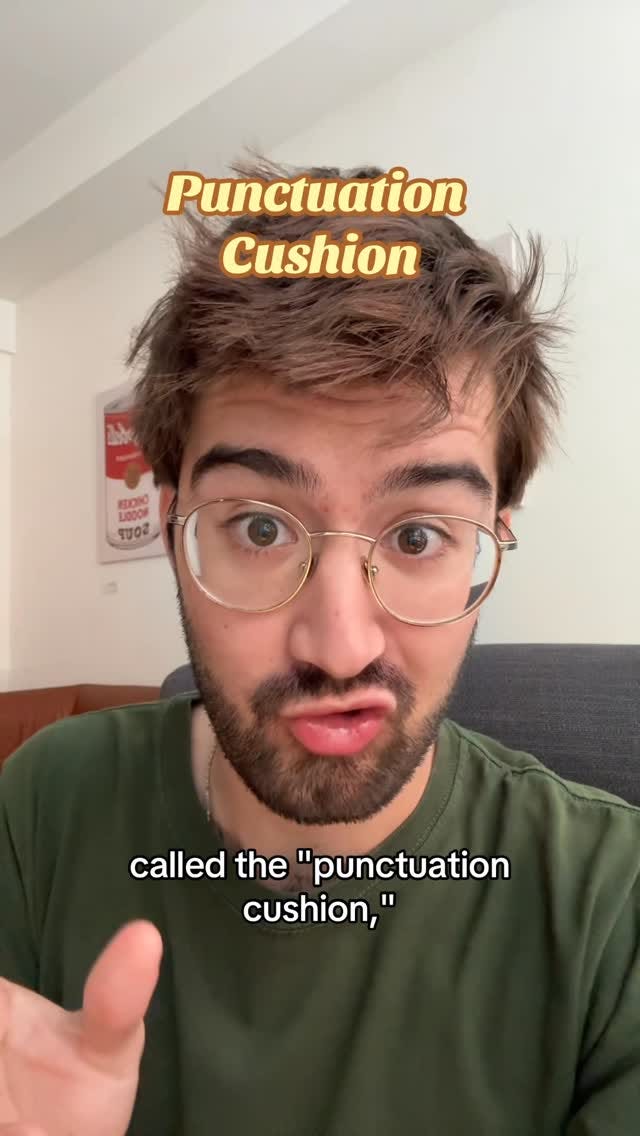My Class Project Just Went Viral
On my student research being featured in an Etymology Nerd video
The internet has a strange way of preserving the smallest of curiosities. Case in point: my in-class project on a niche digital language phenomenon—what I referred to as “punctuation cushioning”—was just featured in a new video by Adam Aleksic, better known as Etymology Nerd.
A little over a year ago, I took a final paper from a Stanford sociolinguistics class and rewrote it into a Substack essay. The project had started almost as a joke. A few months into dating my boyfriend, David, I noticed he always texted his best friend, Ryan, with a very particular flourish: they both added a space before certain punctuation marks, but not others.
I’d seen this online before—in TikTok comments, Discord servers, Reddit threads—but assumed it was just a quirk of certain fandoms, as often happens online. The surprise was realizing it had migrated into the everyday texting habits of two otherwise ordinary twenty-something men (“dudes,” as I like to refer to this group)—one of whom (my boyfriend), notably, avoids social media altogether. Good on him, though I still show him so much content every day, it may not even matter. Whoops.
Regardless, that realization—that the stylistic debris of internet subcultures was showing up in daily, otherwise unmarked conversation—was enough to spark a research project. I built a small corpus and sketched out some early analysis. To my astonishment, that modest experiment was not only well received on Substack but has since found its way into someone else’s work: a video that, at the time of writing, has already attracted more than 850,000 views.
It’s important to emphasize: this was not published in an academic journal, and it should be read with that in mind. Peer review really matters! Even with the guidance of a professor, the amazing Dr. Katherine Hilton, an in-class project isn’t the same as a vetted article. And frankly, this is probably as far as my linguistics research will ever go (in fact, being included in an Etymology Nerd video feels more meaningful to me than presenting this work at a conference—something I was accepted to do at DH2025 before realizing it would be too difficult to secure funding for a conference taking place after my graduation).
Still, the unexpected afterlife of this essay delights me. It confirms three things:
Work—even student work—can be found, supported, and widely shared if it exists online.
A niche interest can travel far beyond its intended audience.
Visibility is no longer determined solely by institutional gatekeeping, but by the circulation systems the internet provides.

For me, this is the essence of public intellectualism today: not the flattening of standards, but the redistribution of visibility. That a Substack essay can enter the archive of a major internet linguist (or the fact that such a job exists at all, and with such virality!) illustrates what I remind my clients at Punctuation PR each day—that in our present moment, the act of publishing is inseparable from the act of being searchable.
Right now, Substack is unusually fertile ground—the algorithm favors new writers, growth is fast, and the community is engaged. But the larger lesson is this: by consistently naming, publishing, and archiving your work, you make discovery possible. You create the conditions for the unexpected afterlife of ideas—the kind of serendipity that turns a classroom project into a viral citation.
So here’s to punctuation cushioning, to Etymology Nerd, and to the uncanny ways language research continues to circulate in the digital age.




thank you for documenting this stylistic debris!!!
Thank you for your meaningful and interesting work and generosity sharing!